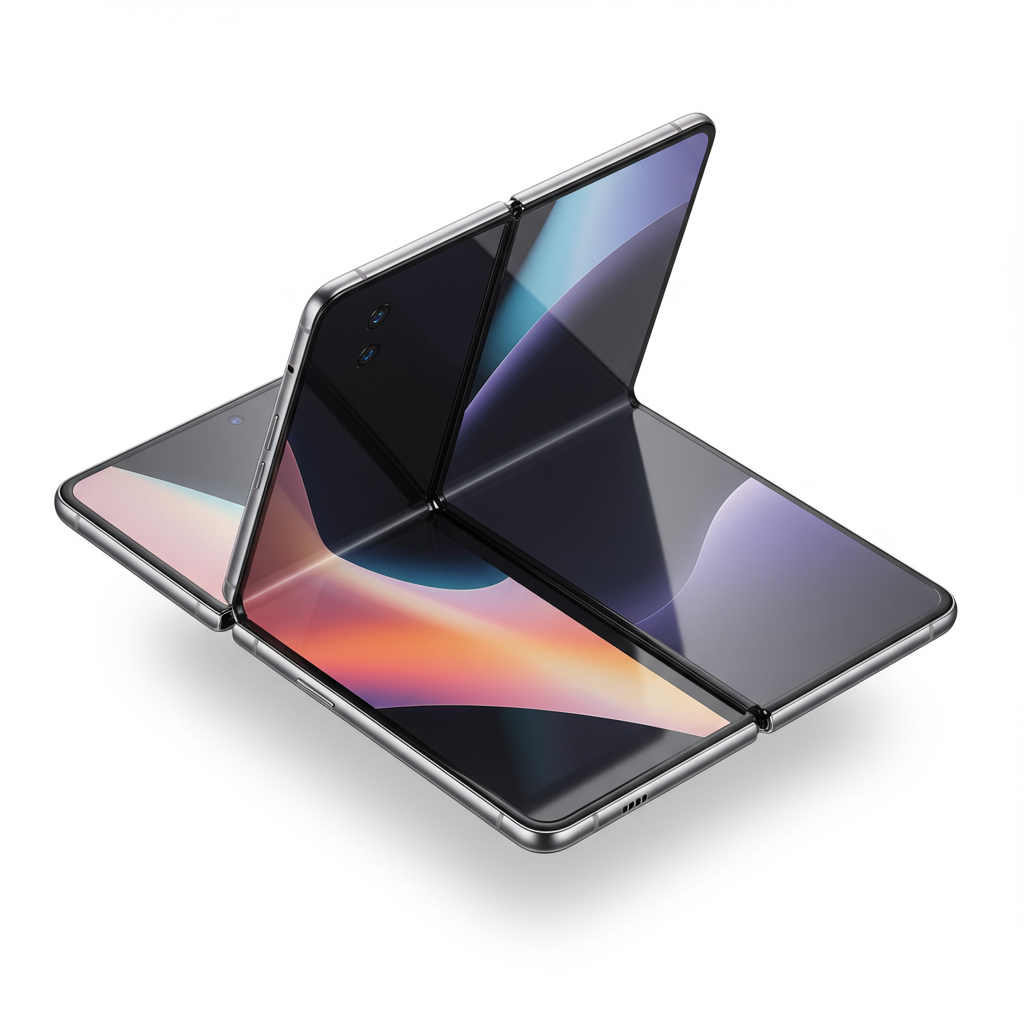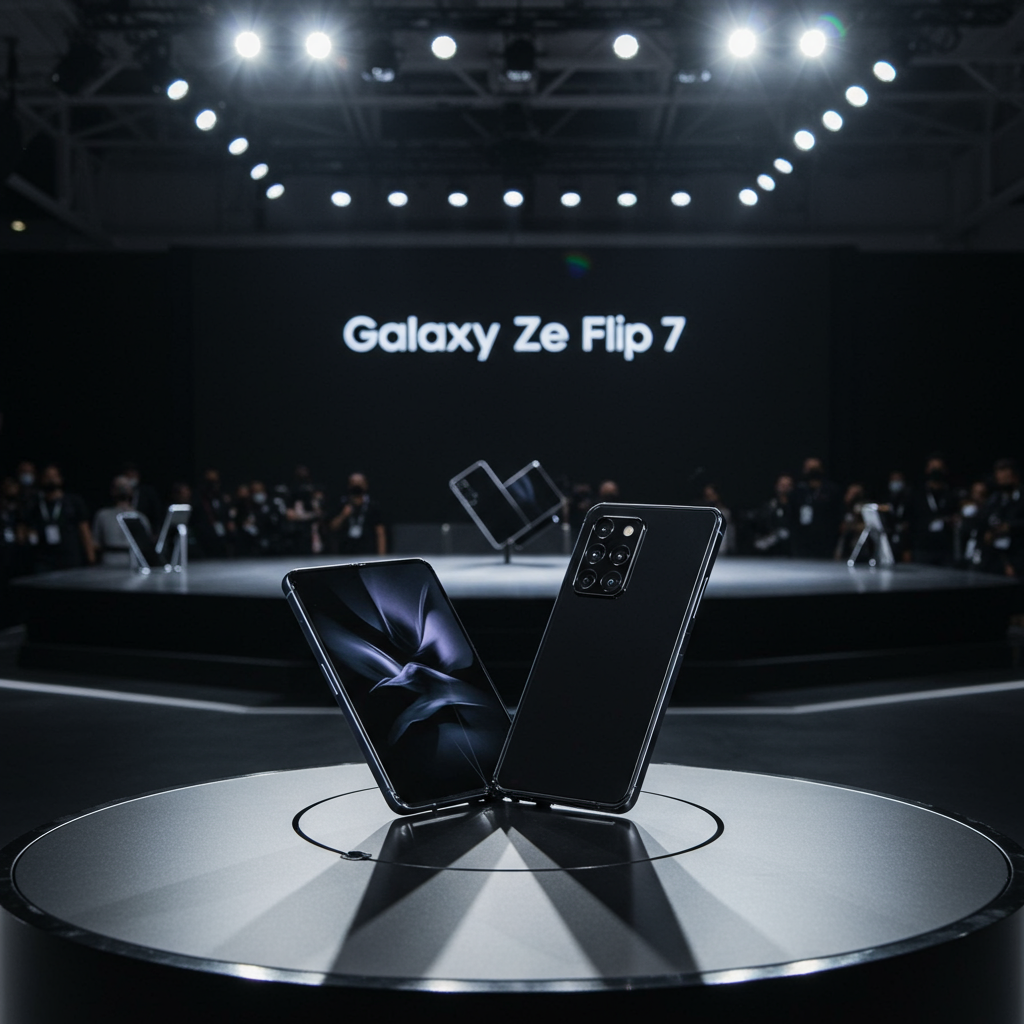Is Samsung gearing up to unveil a groundbreaking trifold smartphone? Recent findings within a Samsung software update suggest the company might have accidentally revealed its innovative design for a future “multifold” device. This potential leak offers a compelling first look at how Samsung plans to tackle the triple-screen form factor, potentially setting the stage for a new era in foldable technology and directly challenging rivals already exploring this space.
The Accidental Reveal: What the Leak Shows
The first hints of this intriguing new device didn’t come from official announcements but were seemingly buried within the code of Samsung’s latest One UI 8 build update. Animations discovered by technology enthusiasts reportedly showcased the intricate details of an unannounced folding phone.
Inside One UI 8: Uncovering the “Multifold 7”
Android Authority is credited with spotting these revealing animations within the One UI 8 software. While initial speculation and rumors had previously referred to a potential Samsung trifold as the “Galaxy G Fold,” the internal animation files themselves reportedly label the device more prosaically as the “Multifold 7.” This internal designation could hint at its generational place or simply be a development codename. Interestingly, Samsung itself previously teased a triple-screen phone concept with a similar appearance at its Unpacked event back in January, aligning neatly with the visuals presented in these leaked animations.
A Closer Look at the Unique Design
The leaked visuals depict a device featuring three distinct display panels that fold together. When fully opened, the design highlights a substantial triple-camera array positioned on the rear of the right-hand panel. Animations further suggest that the critical NFC chip, used for contactless payments and pairing, will also reside within this specific panel.
Looking at the front, the central panel appears to double as the device’s cover display when it’s folded shut, featuring a front-facing camera cutout. However, when the device is fully unfolded into its tablet-like form, this same front-facing camera is located on the right side, sharing the panel with the main rear camera setup on its reverse. This strategic placement seems designed to maximize screen real estate on the other panels.
The Folding Mechanism: Inward and Intentional
One of the most critical revelations from the One UI 8 animations is the detailed illustration of how this trifold device is intended to fold. Unlike some competing designs, Samsung’s rumored approach appears to prioritize display protection.
How it Folds: A Distinct Sequence
The animations showcase a mechanism involving two differently sized hinges. The process appears to involve the left-hand display panel folding inward first, tucking beneath the central panel. Subsequently, the right-hand panel is designed to fold over the top, effectively sandwiching the left panel and the central display together when the device is closed. This creates a compact, multi-layered stack.
Intriguingly, one specific animation includes a warning, explicitly instructing users not to fold the right-hand panel inward first. The animation visually explains that the protruding camera module on that panel would prevent the display from folding flat. Furthermore, attempting to fold the left-hand display completely without the right panel closed over it could potentially cause damage to the device. To facilitate the smooth folding process of the right panel, the rear of the left-hand panel appears to be kept completely blank and flat, providing a clear surface for the right side to rest against.
Why Infolding? Protection and Reliability
This specific inward-folding design, particularly the way both the left and right panels fold towards the center, aligns with reports suggesting Samsung is focusing heavily on display protection and device reliability for its trifold entry. This contrasts significantly with the Z-shaped or S-shaped folding mechanisms seen in devices like the Huawei Mate XT Ultimate Design, which launched last September. Huawei’s approach allows for one section of the display to remain exposed on the exterior when folded, making it potentially more vulnerable to scratches, drops, or impacts.
Samsung’s choice of an “infolding” mechanism, where the flexible screen is largely shielded when closed, appears to be a deliberate decision rooted in durability concerns. While outward-folding designs might offer more flexibility in using different display sections while partially folded, Samsung seems to be prioritizing the safety of the crucial foldable display. This strategy echoes Samsung’s earlier foldable prototypes, such as the Flex G concept shown at CES 2022, which also featured an inward-folding design. The company has previously stated its intention to introduce new form factors only when they achieve satisfactory quality and user experience, underscoring this focus on reliability.
Specifications, Pricing, and Release Timeline (Rumored)
While the One UI 8 leak focuses primarily on the design and folding mechanism, synthesizing information from various sources provides a clearer picture of what to expect from this potential Samsung trifold phone, albeit with the understanding that details remain speculative.
Rumors suggest the device would sport high-end flagship specifications, likely powered by Qualcomm’s Snapdragon 8 Elite chip, similar to what’s anticipated for the upcoming Galaxy Z Fold 7. When fully unfolded, the screen size is expected to be substantial, reportedly falling between 9 and 10 inches – roughly the size of a small tablet like a Galaxy Tab S9. The main rear camera setup is also anticipated to be top-tier, potentially mirroring the advanced triple-lens system rumored for the Galaxy Z Fold 7, which includes a possible 200MP main sensor.
However, the complex trifold structure presents engineering challenges, particularly regarding battery size. Reports indicate that the battery capacity might be smaller than that of competitors like the Huawei Mate XT, likely due to the internal space constraints imposed by the dual hinges and stacked display layers. Thickness is another hurdle, though sources claim Samsung is targeting a maximum folded thickness under 13mm to keep the device relatively manageable.
Regarding timing, one report from Korean media suggests mass production could commence as early as September, pointing towards a potential launch in the fourth quarter of the year. However, other industry observers believe Samsung might initially only tease or preview the device at its upcoming Galaxy Unpacked event scheduled for July 9th, possibly as a strategic move to build anticipation and demonstrate its technical capability in this new form factor, similar to how they’ve previewed concept devices before.
Given the cutting-edge technology involved, the price tag is expected to be significantly high. Rumors place it potentially exceeding $2,900 USD, putting it in a similar premium bracket to other early trifold devices. Initial market availability is also reported to be limited, possibly starting only in select regions like Korea and China before a wider global rollout.
Competing in the Trifold Arena
Samsung’s potential entry into the trifold market is a significant development for the foldable industry. While Huawei has already introduced a commercially available trifold with the Mate XT, Samsung’s rumored device, particularly its inward-folding design, aims to carve out a distinct niche.
Launching a trifold phone allows Samsung to demonstrate its continued innovation and leadership in the foldable space. It positions them to compete directly in this emerging form factor, potentially reclaiming ground or establishing dominance as the market for multi-fold devices grows. Overcoming challenges like optimizing the user interface for three panels, managing device thickness and weight, and perfecting the display crease (though advancements like the near-zero crease on the Galaxy Z Fold 6 SE offer promise) will be key to the device’s success. By prioritizing durability and protection through an inward fold, Samsung appears focused on creating a reliable, albeit potentially less versatile in usage configurations, user experience with this complex new device.
Frequently Asked Questions
What specifically did the Samsung trifold phone leak reveal?
The recent leak, found in Samsung’s One UI 8 software update animations, primarily revealed the potential physical design and folding mechanism of a rumored trifold device. Key details include a three-panel display structure, the location of the main rear cameras and NFC chip on the right panel, a central cover display with a selfie camera, and a specific inward-folding sequence involving two distinct hinges, with warnings against improper folding order.
When could Samsung potentially launch this trifold phone, and what might it cost?
While the leak doesn’t confirm a launch date, reports suggest mass production could start in September, potentially leading to a release in the fourth quarter of 2025. There’s also a possibility Samsung might tease or preview the device at the upcoming Galaxy Unpacked event on July 9th. Due to the complex technology, the rumored price is very high, potentially exceeding $2,900 USD, and initial availability might be limited to certain regions like Korea and China.
How does Samsung’s rumored trifold folding mechanism differ from competitors like Huawei?
Samsung’s rumored trifold design features an “infolding” mechanism where both the left and right side display panels fold inwards towards the center. This is reportedly intended to prioritize screen protection. In contrast, devices like the Huawei Mate XT use an outward-folding mechanism, which leaves one section of the flexible display exposed on the exterior when the device is closed, making it potentially more vulnerable to damage.
Conclusion
The accidental reveal of Samsung’s apparent trifold phone design through One UI 8 animations provides a fascinating glimpse into the future of foldable devices. With its unique inward-folding mechanism, strategic camera placement, and potential for a large, tablet-sized display, this device aims to push the boundaries of mobile form factors. While still speculative, these leaks, coupled with reports of high-end specifications and potential limited initial availability and a premium price, suggest Samsung is serious about competing in the emerging trifold market. All eyes will now be on the upcoming Galaxy Unpacked event on July 9th for any potential official hints or reveals about this intriguing “Multifold 7” or “Galaxy G Fold” device.



